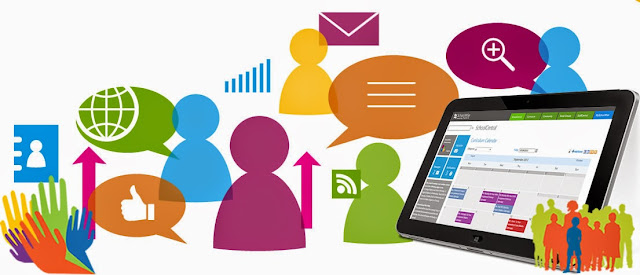Social media has drastically changed and enlarged the way we learn, we get news and information recently. But social learning is not brand-new and does not necessarily require social Media. It is a long-term learning way since ancient times. Social learning is learning from other people by interacting and communicating with them. Those people can be peers, elders, family and friends.
Social learning requires an effective design. The designer should decide where and when to use social learning, define the target learners, clarify objectives and what forms of social instruction best teach. Social learning has some goals in order to fill the gaps and strengthen the weak parts of learning. First, learning must be reliable and enjoyable because social learning is a work of interactions with other people. It is ideal to teach social skills like conversation, interview, negotiation.
In order to engage in social learning, learners need to have some certain abilities. They must be able to speak and listen effectively, comprehend what they read , ask and answer questions, and think critically. They also need to use common social media tools to have a communication with others. Social learning is based on collaborative skills not competitive ones. That's why, learners should work cooperatively and transfer their knowledge, sources, experiences to one another.
Social learning must take place in an environment that the organization shares a common culture and has the will to help each other. That way, it makes people gain organizational self-confidence. Because there is no classification, social statue or rank differences in social learning. For social learning, learners must have access to experts when needed in order to succeed. Legal security and information security is what organizations should take care of because social learning can pose some serious risks such as off-hand comments, unwelcomed advertisements and spams.

In the post-and-comment pattern, an expert, teacher or discussion leader posts a massage and learners comment on it. In the collaborative-document pattern, learners work together to create and refine a document or other piece of work. In the group-discussion, pattern learners interact one another. In the small-group pattern, the teacher assigns discussion topics or team tasks to small groups and then, they work together. In the panel discussion pattern, experts discuss a topic as learners watch and listen to them. In symposium pattern, a group of experts discuss a subject with learners. In the pattern of asking a community of experts, the learner consults a community of experts which learner is not a member. Lastly, in the ask-peers pattern, the learner consults a group of which the learner is also a member.
There are some capabilities to implement the patterns of interaction and to adapt activities to social learning. For example, one of the basic actions in social learning is sending targeted messages to individuals or groups. E-mail and texting are used for sending messages. Learners can meet and carry on conversations without being in the same location in social learning thanks to chatting, audio-conferencing and video-conferencing. Discussion forums are another collaborative tools that have taken place in social learning.
Broadcast sporadic messages are announcements that occur using a micro-blogging capability. They can be used for deliberate or spontaneous communications and for sharing important information. In social learning, participants may need to post messages for others to read and comment on. So, blogs, audio and video podcast can be used for this aim. Social learning also invites learners to create and share learning materials such as photographs, video clips and writings. File and media sharing, social bookmarking and mashups are useful for sharing information.

No comments:
Post a Comment